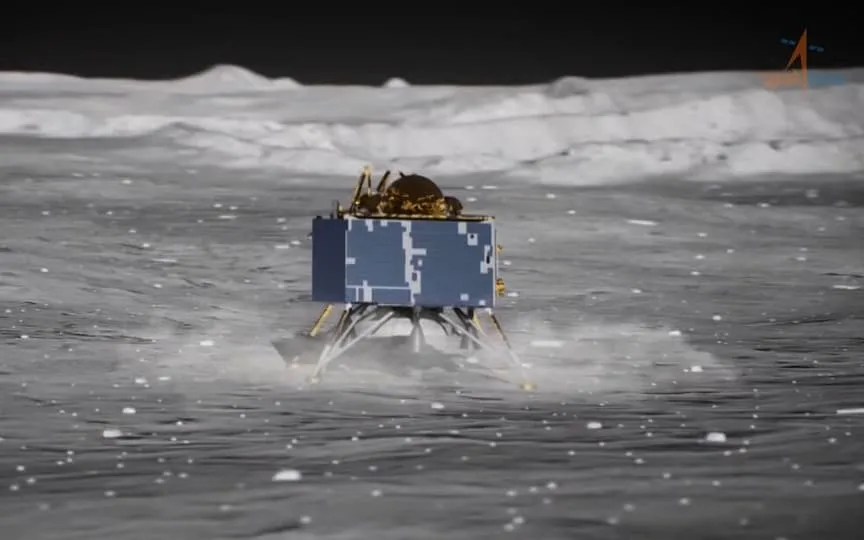Exploring the Alterations at India’s Space Organization ISRO for Chandrayaan-3 Mission
More than 8 million viewers watched the live-stream of the Indian Space Research Organization’s (ISRO) Chandrayaan-3 mission landing on the moon, setting a new record for YouTube. This successful landing not only showcased India’s cost-effective space engineering and scientific achievements but also served as a subtle effort to reposition India’s long-standing space agency as accessible and relatable, as stated by numerous current and former employees, along with 10 consultants and industry experts.
“ISRO used to be a very closed organization. There was some reluctance to talk about its mission and somewhat of a culture of secrecy,” said Namrata Goswami, a space policy expert and professor at the Thunderbird School of Global Management at Arizona State University. “By 2023, I was surprised by their openness. It’s very new and very welcome.”
The stakes are high: The $400 billion global commercial space market is expected to reach $1 trillion by 2030, but India currently has just a 2% share – about $8 billion – which the government wants to see transformed. India expects to have a $40 billion pie by 2040, the government has said.
Prime Minister Narendra Modi has urged the agency to make India a viable space superpower. To get there, the country needs to bring in young scientists, startups, investors and private industry partners, none of whom respond well to a closed approach, senior ISRO scientists said.
“The intention is to be open and involve the next generation,” said BHM Darukesha 49, who drafts and manages ISRO’s social media posts. “We want people to see us as friendly. This is the new focus at ISRO.”
It has caught the attention of university students who might otherwise have avoided the field. Sruthi Parupudi, 18, who studies interaction design in the western Indian city of Ahmedabad, said she had long been interested in space but thought such careers were closed to non-scientists.
“Now I see many sides of the industry opening up,” he said. “I have the opportunity to work with ISRO because I am an engineering student.”
ISRO insiders credit S. Somanath, who assumed the chairmanship in 2022, as having played a key role in getting all members of the organization involved in the changes. Many scientists were initially concerned about job security and the importance of ISRO after opening up the sector to private industry, said seven senior scientists, who did not want to be named because they are not authorized to speak to the media.
Somanath said he has implemented other small changes, such as encouraging breaks, informal problem-solving discussions and refreshment kiosks where employees can meet for tea. His goal was to make all of this a more attractive place to work and collaborate.
“These little things that global companies have are not automatically available in government organizations all the time, and they are important to the young people we want to attract as we expand our reach,” Somanath said. “Many ideas can be better discussed over a cup of tea.”
Employees and experts report that they have experienced more independence and that the new frank atmosphere helps speed up projects. Publicizing the achievements of ISRO scientists has boosted their confidence and brought space startups to the door, seeking advice as they plan private launches.
A responsive agency makes such partnerships more attractive, private space insiders say.
“Private industry doesn’t need help, it needs predictability,” said D S Govindrajan, CEO of Aniara Communications, which provides satellite services to emerging markets. “That kind of predictability is definitely there now.”
UP AND HERE
From its humble beginnings — stories of scientists using a church as a “mission control room” for the agency’s first launch and of transporting rocket parts on bicycles are legendary in the country — ISRO has reached its recent heights, becoming the first nation to land a rover. at the south pole of the moon.
It has now sought to explore the Sun, put astronauts into orbit, and explore Venus, and is NASA’s partner in planetary defense and deep space exploration.
“Space is a critical place to establish yourself as a superpower. The US is there, China is there, so India has to be there,” said Ashok Sharma, Visiting Scholar at the University of New South Wales in Canberra, Australia. Defense Forces Academy.
The Modi government, which is heading for elections next year, is pushing for the development of India’s space industry. Insiders say he has taken a personal interest in inviting foreign investment into the sector.
“He wants space to do what India has been able to do with IT,” said a person familiar with the prime minister’s office and industry discussions. The person declined to be named because the discussions are not public.
The government is widely expected to open the doors to foreign investment in the sector this year. ISRO focuses on exploration and new science, while three different entities – Indian National Space Promotion and Licensing Center (IN-SPACe), NewSpace India Limited (NSIL) and Indian Space Association (ISpA) – interact with the private sector, negotiate. launch and enhance business.
There are many obstacles: space launches are dominated by established companies and organizations, and a costly failure or an economic downturn could reverse momentum.
“You’re spending public money, so you have to show the public what the money is being spent on,” said Somak Raychaudhury, an astrophysicist and vice chancellor of Ashoka University.
But so far, increased openness has led to optimism that the positive changes will be long-lasting.
“People now see that scientists are normal people, and in a way, maybe that can inspire young minds to study science more,” Raychaudhury said.




